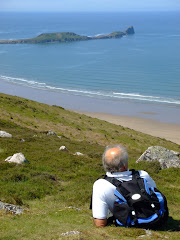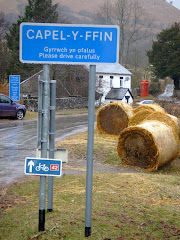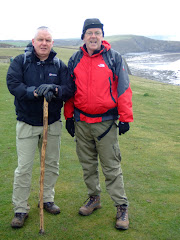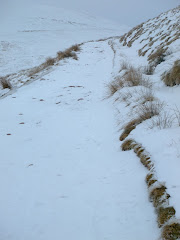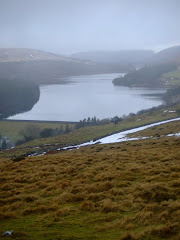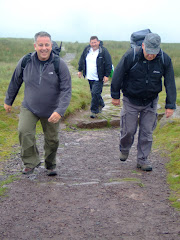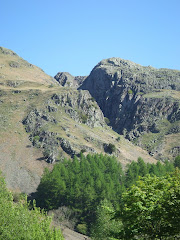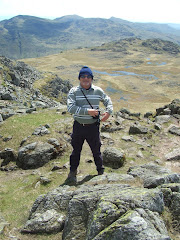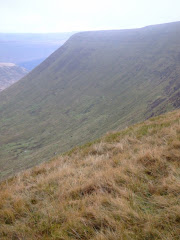
There was considerable debate the night before whether to queue first to secure a ticket for the ferry and then return for breakfast, or to turn up in the dinning room before 8.00am hoping that we could start eating as soon as possible and then leave for Martins Haven to catch the ferry to Skomer.
Sue soon kindly explained that if we queued first then we definitely wouldn't be able to return in time to eat breakfast - as it turned out this was some good advice.

So it was an early shower before eating a full cooked breakfast, with cereal and toast before departing the Clock House after a splendid overnight stay. A ten minute journey to the car park at Martins Haven and we soon discovered that we were in the first twenty customers for the ferry (that only holds fifty).
We didn't know it when we booked the date for our visit to Skomer that the island had been closed for the previous three days for the annual bird count, but it was fortunately re-opened to visitors today!

You are unable to pre-book the ferry (the cost was £10 each), it's first-come-first-served, so at 8.30am we purchased our landing ticket (£8 each) and settled down to patiently wait for the first ferry at 10.00am. We were able to watch the volunteers land at Martins Haven over the next hour as they returned to the mainland following their 3 day stay on Skomer.
The breeze and swell made the fifteen minute crossing to Skomer really pleasant for the packed Dale Princess as Fat Alex, the skipper, negotiated some dangerous looking rocks that poked through the surface of the sea.

After landing at the jetty we then climbed a few hundred feet to the meeting point where one of the volunteers working on the islands provided us with a brief welcome and introductory talk. The bird count earlier in the week had identified 22,000 pairs of Manx Shearwaters and 13,000 pairs of Puffins. The burrows used by the Puffins and Manx Shearwaters litter the island like bomb craters.
The Island is about one and a half miles long and one mile wide and will only cater for up to 250 visitors each day; volcanic rocks make the scenery spectacular, with hosts of wild flowers in early summer.

We decided to start the 6.5 kilometre perimeter walk around the island to the south passing the Neck and visiting South Plateau and The Wick (a geological fault has created an impressive large, flat cliff face opposite a giant slab sloping into a thin wedge of sea), where we saw Razor Bills, Guillemots, Herring Gulls, Oyster-catchers and Puffins.

Passing the spectacular Mew Stone we were then amazed to see these cute Puffins brazenly walking across the path immediately in front of us at Skomer Head!

After a visit to the trig. point at 79 metres (no Nuttalls on Skomer to visit!), we then looked around the self-catering accommodation available for over-night guests to stay on the island and visitor centre on the site of the 19th century old farm, that were refurbished in 2007, before crossing the island to return to the landing jetty where a grey seal was basking on a rocky outcrop in the cove.


The return journey to Martins Haven through Jack's Sound, was made even more enjoyable by the warm sunshine and clear blue skies.


This is a really magical place.
Apparently Springwatch and Ray Mears are filming on the island in the next few weeks.

































































